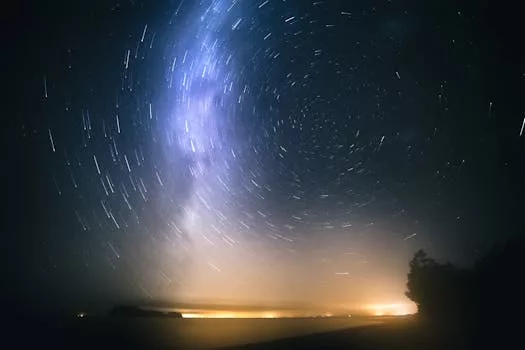
“
Introduction to Beyond the Milky Way: Imagining New Worlds and Possibilities
Beyond the Milky Way: Imagining New Worlds and Possibilities, as we gaze up at the night sky, we are reminded of the infinite mysteries that lie beyond our galaxy. The Milky Way, our home galaxy, is just one of billions of galaxies in the observable universe, each containing billions of stars and potential planets. In this article, we will explore the possibilities of space travel and the discovery of new worlds, delving into the latest research and advancements in the field of astronomy. For a deeper dive into the imaginative aspects of the universe, check out The Infinite Universe of Imagination: Beyond Celestial Boundaries.
Section 1: Understanding the Milky Way and Beyond
The Milky Way is a barred spiral galaxy, consisting of approximately 200-400 billion stars, as well as various types of interstellar gas and dust. Our solar system is located in one of the outer arms of the galaxy, about 27,000 light-years from the center. But what lies beyond the Milky Way? The universe is vast and complex, with galaxies and galaxy clusters stretching out as far as the eye can see. The latest research has revealed that there are billions of galaxies in the observable universe, each with its own unique characteristics and features. To understand more about the imaginative aspects of these galaxies, read Galaxies of Dreams: How Imagination Transcends the Night Sky.
Types of Galaxies
There are several types of galaxies, including spiral, elliptical, and irregular galaxies. Spiral galaxies, like the Milky Way, are characterized by their distinctive spiral arms, while elliptical galaxies are more rounded and contain mostly older stars. Irregular galaxies, on the other hand, are chaotic and lack a distinct shape. Understanding the different types of galaxies and their properties is crucial for advancing our knowledge of the universe and the potential for life beyond the Milky Way.
Section 2: Space Travel and Exploration
Space travel and exploration are critical components of discovering new worlds and understanding the universe. With the help of advanced telescopes and spacecraft, we have been able to explore the Milky Way and beyond, discovering new planets, stars, and galaxies. The latest missions, such as the James Webb Space Telescope and the Transiting Exoplanet Survey Satellite (TESS), have revealed thousands of exoplanets, some of which are believed to be located in the habitable zones of their respective stars. To learn about the imaginative journey of space exploration, you can explore Charting New Realms: The Journey of Imagination Beyond the Stars.
Technological Advancements
Technological advancements have played a crucial role in advancing our understanding of the universe. From the development of powerful telescopes to the creation of sophisticated spacecraft, we have been able to push the boundaries of space exploration and discovery. The latest innovations, such as advanced propulsion systems and artificial intelligence, are expected to further enhance our ability to explore the universe and discover new worlds.
Section 3: The Search for Life Beyond the Milky Way
The search for life beyond the Milky Way is an intriguing and complex topic. While we have yet to find definitive evidence of extraterrestrial life, there are several factors that suggest the possibility of life existing elsewhere in the universe. From the discovery of exoplanets to the detection of biosignatures, scientists are using a variety of methods to search for life beyond our galaxy.
Biosignatures and the Search for Life
Biosignatures, such as the presence of oxygen or methane in a planet’s atmosphere, can be indicative of biological activity. Scientists are using advanced spectrographic techniques to analyze the light emitted by exoplanets, searching for signs of life. The discovery of biosignatures would be a significant breakthrough in the search for life beyond the Milky Way, providing new insights into the possibility of life existing elsewhere in the universe.
Conclusion and Takeaways
In conclusion, the universe is vast and complex, with billions of galaxies and potential worlds waiting to be discovered. The search for life beyond the Milky Way is an ongoing and intriguing topic, with scientists using a variety of methods to search for biosignatures and understand the possibility of life existing elsewhere in the universe. Key takeaways from this article include:
- The universe is vast and complex, with billions of galaxies and potential worlds waiting to be discovered.
- Space travel and exploration are critical components of discovering new worlds and understanding the universe.
- The search for life beyond the Milky Way is an ongoing and intriguing topic, with scientists using a variety of methods to search for biosignatures and understand the possibility of life existing elsewhere in the universe.






